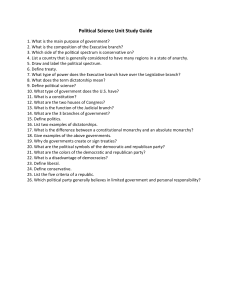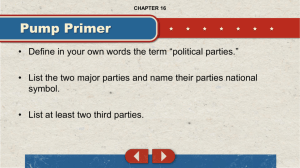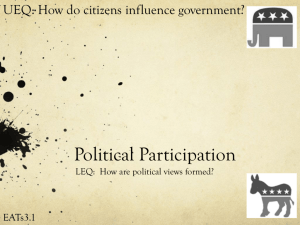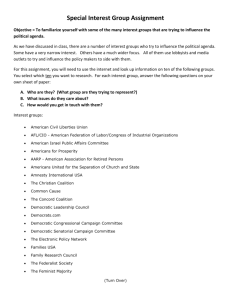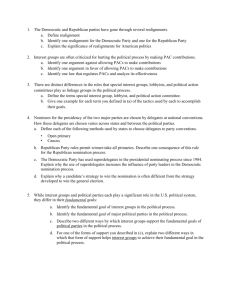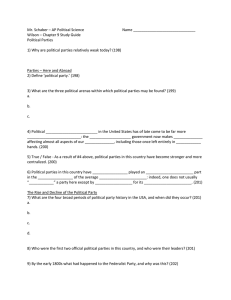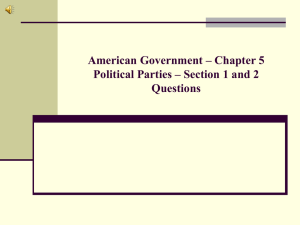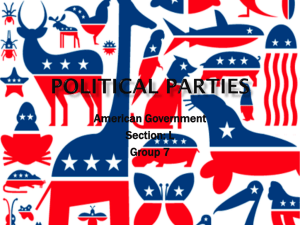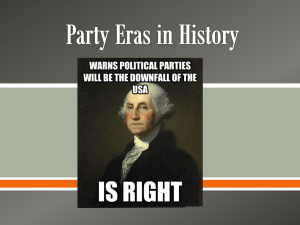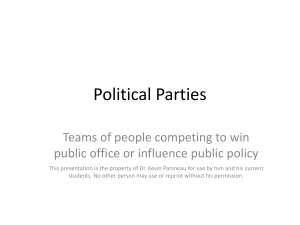APGOV Power Point 12 - Long Branch Public Schools
advertisement
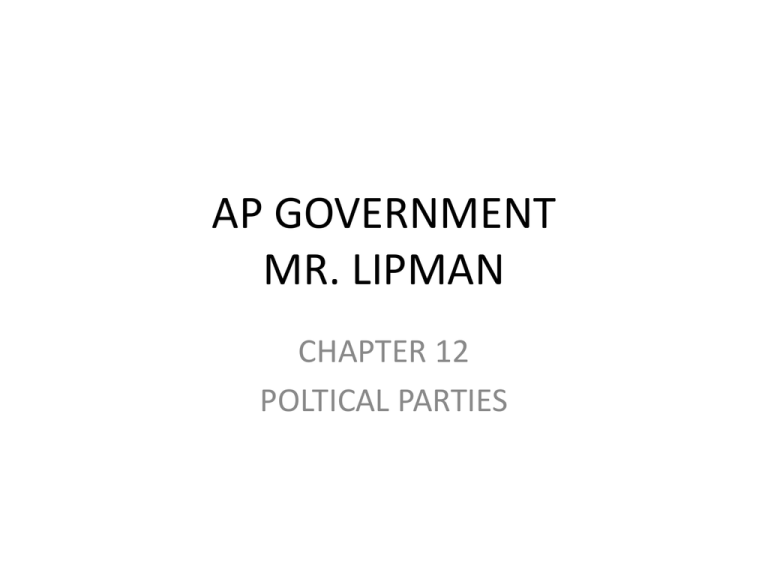
AP GOVERNMENT MR. LIPMAN CHAPTER 12 POLTICAL PARTIES _____________was a democratic political machine that ran New York City in the 1870s. A.Whig B.The Donkey C.The Elephant D.Tammany Hall E. The John Birch Society _____________was a democratic political machine that ran New York City in the 1870s. A.Whig B.The Donkey C.The Elephant D.Tammany Hall E. The John Birch Society • The Golden Age, 1860-1932 – Lincoln, Republicans – Political Machines – Tammany Hall • The Modern Era – The New Deal – Candidate Centered Politics • Citizen Support and Party Realignment – Critical Elections – Secular realignments – Shift in the South—the 1990s. The American Enterprise Institute is an example of what? A. a “think tank” B. a political machine C. a political action committee D. a special interest group E. a non-profit group The American Enterprise Institute is an example of what? A.A “think tank” B.A political machine C.A political action committee D.A special interest group E. A non-profit group • National party – National chairperson – National committee • National convention – Super delegates – Large television audiences • States and localities – States regulate parties – Smallest unit is the precinct • Informal groups – National Federation of Republican Women, the Young Republicans, Think Tanks (the Heritage Foundation) How are political parties organized? • Running candidates for office – Raising money • Record numbers – Mobilizing support and getting-out-the-vote (GOTV) • Public opinion surveys • Television ads • GOTV – Republican voter vaults, Democratic unions and interest groups • Formulating and promoting policy – National party platform • Two-thirds implemented by winning party • One-half of the losing party’s platform implemented In the course of the past few decades, party unity among the Democratic and Republican parties has __________. A. become less unified B. stayed the same C. become more unified. In the course of the past few decades, party unity among the Democratic and Republican parties has __________. A. become less unified B. stayed the same C. become more unified. Activities of American Political Parties • Organizing government – Parties in Congress • Loyalty • The party line • Decentralization – The presidential party – Parties in the federal courts – Parties in state governments • Influence • Furthering unity, linkage, and accountability – Parties link branches of government Conservative voters tend to be what? A.Male B.White C.Wealthy D.Religious E. Older F. All of the above Conservative voters tend to be what? A.Male B.White C.Wealthy D.Religious E. Older F. All of the above • Party identification • Political socialization – Early socialization • Group affiliations – Geographic region – Gender – Race and ethnicity – Age – Social and economic factors – Religion – Marital status Who identifies as a Democrat? A Republican? Theodore Roosevelt led the _________ party. A.Bull Moose B.Tea C.Dixiecrat D.Green E. Libertarian Theodore Roosevelt led the _________ party. A.Bull Moose B.Tea C.Dixiecrat D.Green E. Libertarian Minor Parties in the American Two-Party System • Formation and role of third parties – Social issues – Civil rights issues – Trust in government – Effectiveness • Barriers to third-party success – Proportional representation – Winner-take-all system What are some major third parties? What does de-alignment theory state? A.Both parties are not as “straight” as they used to be. B. If two parties are compared to each other, one will always have an advantage. C. There has been a general decline in party identification. D.A third party always shifts the ideology of one of the two major parties. E. Parties will never stay aligned as long as there is democracy. To Learning Objectives What does de-alignment theory state? A.Both parties are not as “straight” as they used to be. B. If two parties are compared to each other, one will always have an advantage. C. There has been a general decline in party identification. D.A third party always shifts the ideology of one of the two major parties. E. Parties will never stay aligned as long as there is democracy. How has the two-party system developed? What does a realignment look like? How much money do parties raise? What do party platforms look like?
